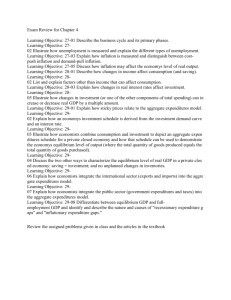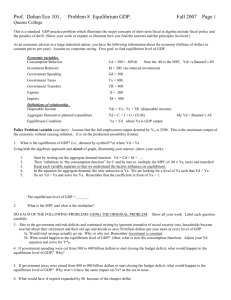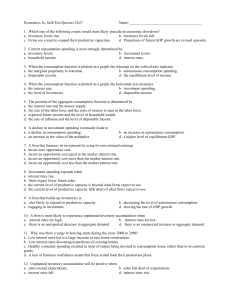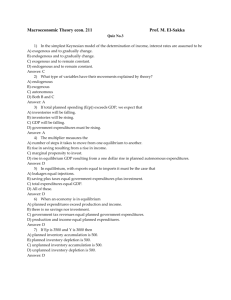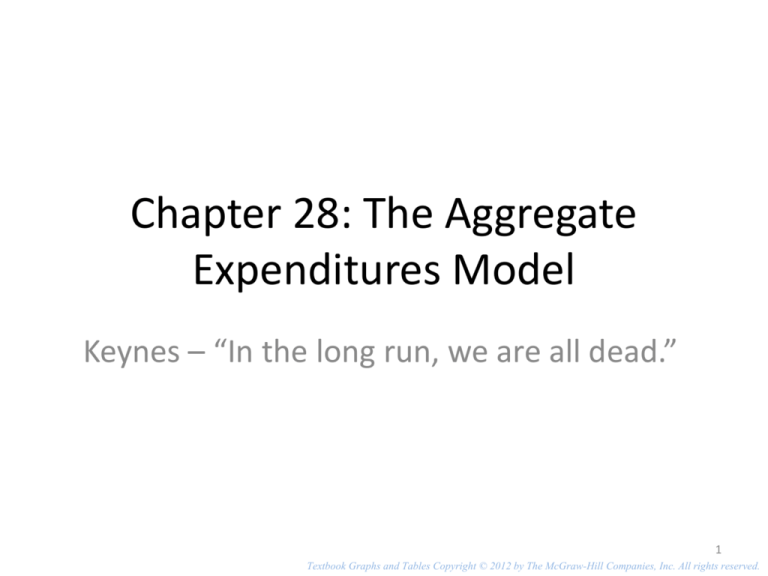
Chapter 28: The Aggregate
Expenditures Model
Keynes – “In the long run, we are all dead.”
1
Textbook Graphs and Tables Copyright © 2012 by The McGraw-Hill Companies, Inc. All rights reserved.
Assumptions of Model
1. Prices (goods, services,
and resources) are
stuck.
→ In the immediate short
run, prices can’t react to
market changes.
Average time between price changes for 350
categories of goods was 4.3 months.
2
Assumptions of Model: Prices are Stuck
• Reasons:
– Most markets are not perfectly competitive, which
leads to some degree of price-setting (and
sticking) by producers.
– Firms:
• Know that consumers prefer stable prices.
• Are afraid of competitive price wars.
– Changing prices can be costly - “changing the
menu price”.
3
Assumptions of Model
2. Since prices are stuck, economic feedback to
firms is in the form of unplanned inventory
changes.
3. The economy has excess production capacity
and unemployed labor.
4
5
6
Equilibrium: Private, Closed Economy
7
Equilibrium: Private, Closed Economy
• Equilibrium (private, closed economy):
AE = C + Ig = GDP
→ Planned spending equals total production (income)
8
Equilibrium: Private, Closed Economy
• By definition, actual spending always equals GDP
(income):
(C + Ig + unplanned inventory changes) = GDP
• But only in equilibrium does aggregate planned
spending equal GDP (income):
AE = C + Ig = GDP
→ No unplanned inventory changes in equilibrium.
9
Equilibrium: Private, Closed Economy
10
The Multiplier effect
Increase in investment spending = $5 billion
+ Second-round increase in consumer spending = MPC × $5 billion
+ Third-round increase in consumer spending = MPC2 × $5 billion
+ Fourth-round increase in consumer spending = MPC3 × $5 billion
••••••••••••
Total increase in real GDP = (1 + MPC + MPC2 + MPC3 + . . .) × $5 billion
= 1/(1 – MPC) * $5 billion
= 1/(1 – 0.75) * $5 billion = $20 billion
11
The Multiplier effect – changes in Ig
12
Two Net Exports Schedules
13
Aggregate Expenditures with Net Exports
14
Aggregate Expenditures with Government Purchases
15
Equilibrium: Mixed, Open Economy
16
Taxes and Equilibrium GDP
17


